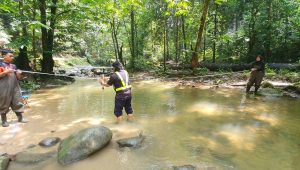Setelah beberapa dekad, dunia akhirnya berada pada fasa pemulihan lapisan ozon. Menurut Pertubuhan Bangsa-Bangsa Bersatu…

Background

The benthic communities form an important link in the food web of the marine ecosystem. Bottom dwelling fishes and crustaceans feed mainly on the benthic organisms, hence it is one of the factor deciding the fishery potential of the water body. They also structure and oxygenate the bottom by reworking sediments and play a fundamental role in breaking down organic materials, detoxifying pollutants, dispersion and burial.
The Importance
In recent years, scientific research and monitoring on benthic communities has been gaining importance in pollution studies and assessment of marine ecosystem health. Indeed, benthic invertebrates are often used as biological indicators (e.g. the European Water Framework Directive) because they can provide information which reflects the environmental conditions.
These benthic organisms consist of different species that exhibit different levels of tolerance and pollution.
Various diversity indices are use to determine the distribution of benthic invertebrates related to habitat quality. Features of population such as number of existing species (Richness), distribution of individuals equally (Evenness) and total number of existing individuals underlie the basis of diversity indices. Undisturbed habitats are characterized by high diversity and number of different benthic species. While the pollution is increasing, the number of tolerant species increases and sensitive species begin to disappear. Human activities are the primary cause of recent changes to marine biological diversity in coastal, subtidal and mangrove areas. Among of the major activities includes dredging and reclamation, industrial effluents, sewage discharge as well as oil pollution.
Take Action

The procedures in macrobenthos analysis start off with collecting benthos samples using a Ponar grabber, processing and filtering samples through 500 μm sieve, sorting and identifying the benthic invertebrates, and finally data interpretation through statistical analysis of a population obtained. A long term monitoring program could provide better and accurate information on the state of the biodiversity and assessing priorities for conservation of a target area.



